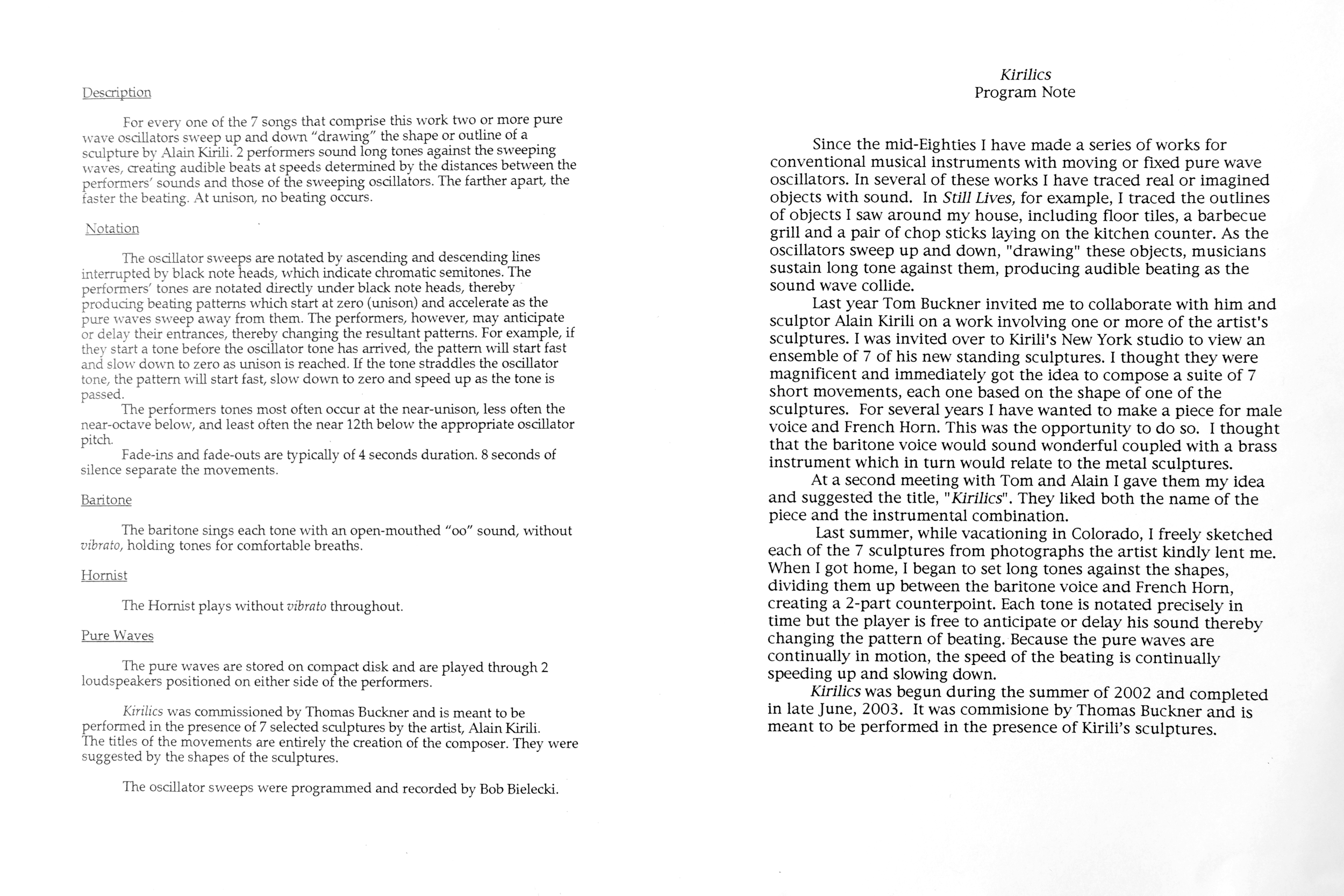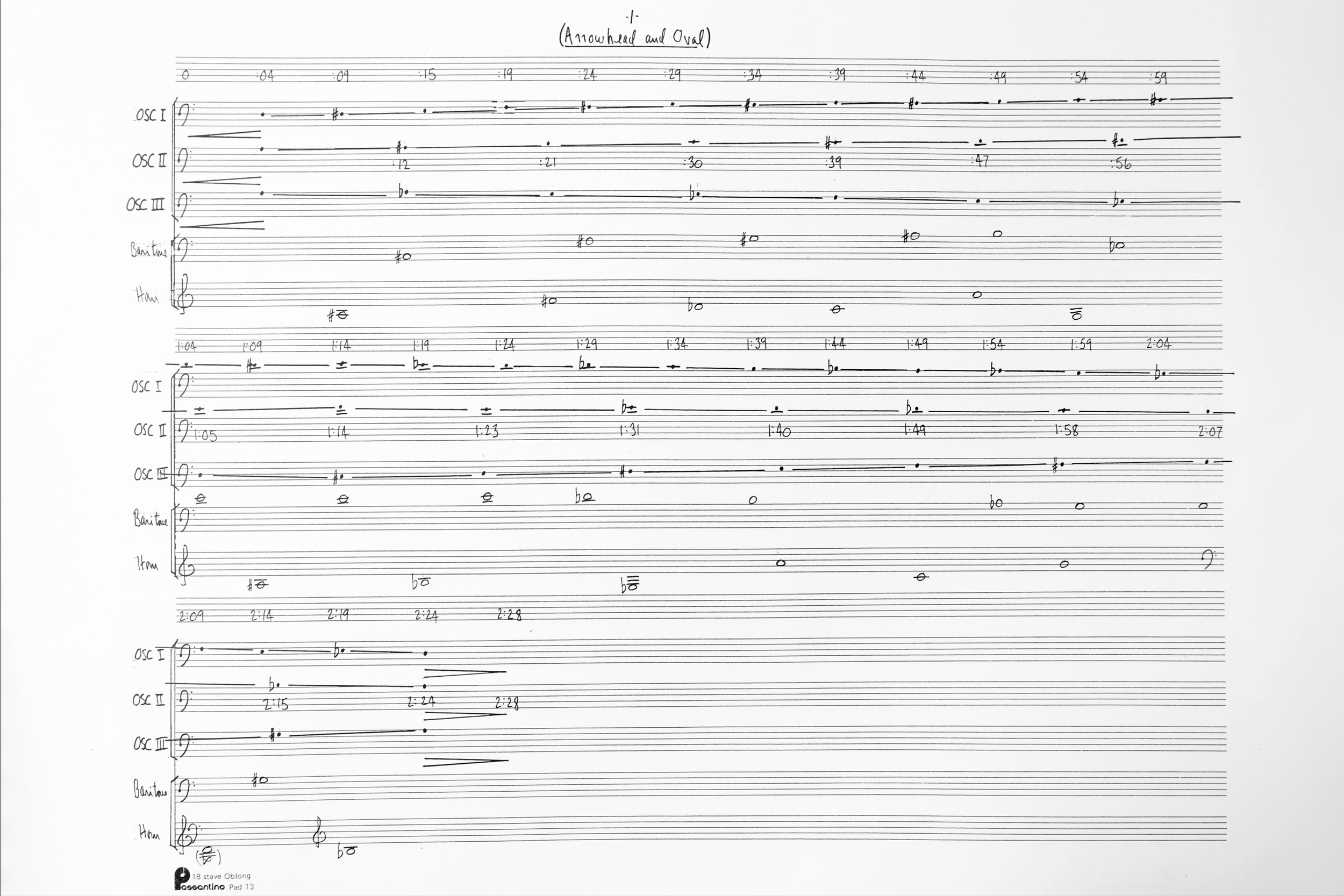Kirili in Dialogue with
Alvin Lucier
American composer
Alain Kirili, Thomas Buckner, Alvin Lucier, White Street, New York, 2002
(Photo © Ariane Lopez Huici )
“ Le son de la sculpture
Dans le plus profond de mes secrets, se trouve sûrement la clarinette de Sydney Bechet qui est venu chez mes parents un soir pour diner. Il a joué dans la cuisine et c' est mon premier souvenir d'allègement, d'allégresse, d'émotion esthétique.
C'est le premier que je puisse formuler et le son continue de guider et d'unifier mon rythme créatif. Je m'étonne d'être capable d’avoir fait appel à des artistes aussi différents que Steve Lacy, David S Ware, Alvin Lucier, et Somie Satoh. Chacun correspond à la richesse de l'existence.
La sensualité méditative de Somie Satoh fait écho à cet aspect de mes sculptures, et le rythme paroxistique de David S. Ware se lit dans nombre de mes modelés. Rien n’est éclectique mais mon instinct pour la variété et le renouvellement est la vérité qui conduit toutes ces interactions qui révèlent ces enjeux plutôt que d'être une simple convocation à un spectacle. En fait toute ma vie est dans cette lutte contre le spectacle et la distraction. Le divertissement étant une part entière de l'intelligence créative que j'assume avec bonheur. Si je n’écarte pas la douleur dans la création, elle vient ultimement pour enforcer l'approfondissement de la beauté et du plaisir créatif. Mais je ne m'imagine pas dans une activité ludique, ou rêveuse de l'art. Je me rends compte d'être toujours dans une « attaque directe » physiquement et spirituellement. Des jours passent, des semaines aussi dans la préparation de cette charge émotive et incontournable qu'il faudra à un moment donné admettre dans une nécessité créative incontournable : l'urgence de l’art. ”
Alain Kirili
excerpt from his 2004 note Pourquoi devient-on sculpteur ? (unpublished)
KIRILICS
by Alvin Lucier, composed in 2003, commissioned by Thomas Buckner
and meant to be performed in the presence of Alain Kirili's sculptures.
Listen to a recording of Kirilics For Baritone Horn And Oscillators by Alvin Lucier, in 2004
Program Note by Alvin Lucier, 2003
Since the mid-Eighties I have made a series of works for conventional musical instruments with moving or fixed pure wave oscillators. In several of these works I have traced real or imagined objects with sound. In Still Lives, tor example. I traced the outlines of objects I saw around my house, including floor tiles, a barbecue grill and a pair of chop sticks laying on the kitchen counter. As the oscillators sweep up and down, "drawing" these objects, musicians sustain long tone against them, producing audible beating as the sound wave collides.
Last year Tom Buckner invited me to collaborate with him and sculptor Alain Kirili on a work involving one or more of the artist’s sculptures. I was invited over to Kirili's New York studio to view an ensemble of 7 of his new standing sculptures. I thought they were magnificent and immediately got the idea to compose a suite of 7 short movements, each one based on the shape of one of the sculptures.
For several years I have wanted to make a piece for male voice and French Horn. This was the opportunity to do so. I thought that the baritone voice would sound wonderful coupled with a brass instrument which in turn would relate to the metal sculptures.
At a second meeting with Tom and Alain I gave them my idea and suggested the title, "Kirilics".
They liked both the name of the piece and the instrumental combination.
Last summer, while vacationing in Colorado, I freely sketched each of the 7 sculptures from photographs the artist kindly lent me. When I got home, I began to set long tones against the shapes, dividing them up between the baritone voice and French Horn, creating a 2-part counterpoint. Each tone is notated precisely in time but the player is free to anticipate or delay his sound thereby changing the pattern of beating. Because the pure waves are continually in motion, the speed of the beating is continually speeding up and slowing down.
Kirilics was begun during the summer of 2002 and completed in late June, 2003. It was commissioned by Thomas Buckner and is meant to be performed in the presence of Kirili's sculptures.








